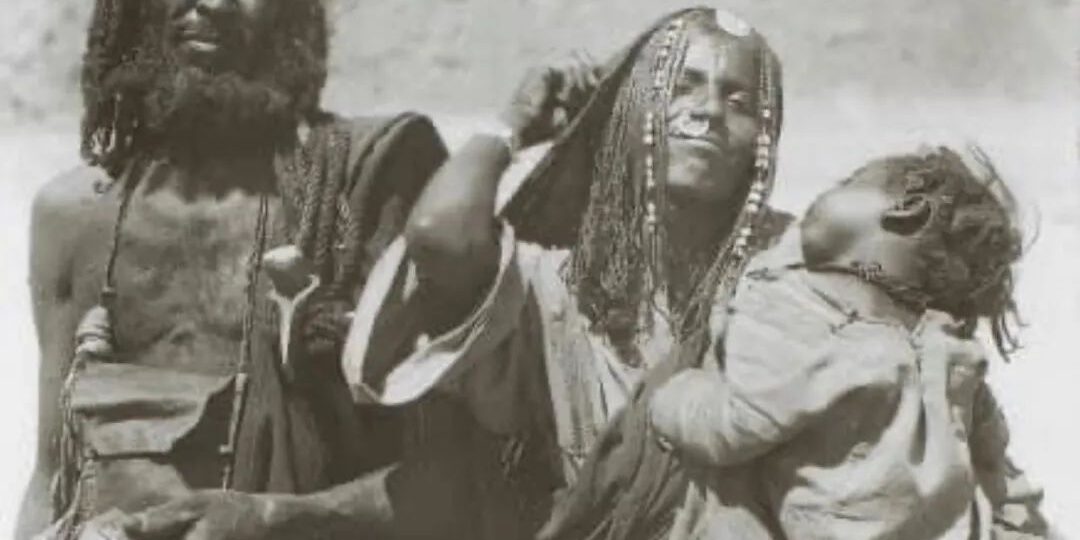The Bishari people of Upper Egypt, known for their reddish-brown complexion, are a living testament to the Nile Valley’s phenotypical diversity. In ancient times, their traits were celebrated alongside the jet-black skin of Nubians and the high yellow tones of Horn Africans, as part of a cultural mosaic that defined Kemet (Egypt).
The Know Thyself Institute notes that the Bishari’s reddish-brown hue wasn’t just a physical trait—it was a symbol of the Nile Valley’s interconnectedness, where diverse peoples came together to build a great civilization (Know Thyself Institute, 2025).
Picture a time when the Nile’s banks were alive with people of all shades, united by shared traditions and values. This article explores the Bishari’s role in ancient Upper Egypt, their influence on Kemetic culture, and how their legacy can inspire us to celebrate diversity today. Let’s journey to Upper Egypt, where the Bishari’s reddish-brown skin became a part of Africa’s enduring story of unity and collaboration.
The Bishari in Ancient Upper Egypt
The Bishari, a Beja subgroup, have lived in the deserts of Upper Egypt and Sudan for thousands of years, their reddish-brown complexion a distinctive feature of the region. In ancient times, Upper Egypt—south of modern Cairo—was a cultural hub where the Bishari interacted with Nubians and Egyptians as early as 3000 BCE. Archaeological evidence, like pottery from the Naqada period (4000–3100 BCE), shows similarities between Upper Egyptian and Beja styles, suggesting trade and cultural exchange (Michinori, 2000).
The Bishari were nomadic herders, skilled in navigating the harsh desert environment. Their reddish-brown skin, often depicted in Egyptian art, made them a visible part of the Nile Valley’s diversity. Wall paintings from the Old Kingdom (2700 BCE) show figures with this hue alongside darker Nubians, indicating their presence in the region (Institute for the Study of Ancient Cultures, 2025). The Bishari likely supplied Egypt with livestock and desert resources, like ostrich feathers, which were used in Kemetic rituals.
Their cultural influence went beyond trade. The Bishari’s oral traditions, rich with stories of the desert and the Nile, may have inspired Kemetic myths about the afterlife, which often feature desert landscapes. Their reddish-brown complexion also became a symbol of Upper Egypt’s identity, distinct yet integrated with the broader Nile Valley.
The unification of Upper and Lower Egypt around 3100 BCE wasn’t just political—it was cultural, with the Bishari playing a role in this blending of traditions. Their presence highlights the Nile Valley’s role as a melting pot, where diverse phenotypes and cultures came together to create something greater.
Bishari Influence on Kemetic Culture
The Bishari’s reddish-brown complexion wasn’t just a physical trait—it was a cultural marker in ancient Kemet. In art, this hue was often used to depict Upper Egyptians, reflecting the Bishari’s influence.
For example, the palette of Narmer, a key artifact from 3100 BCE, shows figures with reddish-brown skin, symbolizing Upper Egypt’s people (Kemet Expert, 2025). This wasn’t about division—it was about pride, showing how the Bishari’s traits were woven into Kemetic identity.
The Bishari also contributed to Kemetic rituals. Their knowledge of the desert, including the use of ostrich feathers in ceremonies, became part of Egyptian practices. Feathers were used in the “Weighing of the Heart” ceremony, a key afterlife ritual, symbolizing truth and justice.
This connection suggests the Bishari’s cultural impact reached deep into Kemetic spirituality (Nile Valley Collective, 2025). Their reddish-brown skin, often paired with these symbols in art, became a visual reminder of Upper Egypt’s role in the Nile Valley’s story.
Agriculturally, the Bishari’s herding techniques influenced Upper Egyptian practices. Their ability to manage livestock in arid conditions helped Egyptians adapt to the region’s climate, ensuring food security. This practical knowledge, combined with their cultural traditions, made the Bishari an integral part of Kemet’s success.
Their reddish-brown complexion stood alongside other phenotypes in a society that valued diversity, a fact that challenges modern biases about skin tone.
The Bishari’s influence shows how the Nile Valley thrived on collaboration. They weren’t just neighbors—they were partners, contributing to a civilization that drew strength from its varied peoples. Their reddish-brown legacy is a testament to the beauty of African diversity, a beauty that Kemet celebrated in its art, rituals, and daily life.
Celebrating Diversity Through the Bishari Legacy
The Bishari’s reddish-brown complexion in ancient Upper Egypt reminds us of the Nile Valley’s inclusive values, a lesson we can apply today. In a world where colorism often divides, the Bishari’s story shows that diversity can unite. Their traits, celebrated in Kemetic art, challenge us to embrace all phenotypes, from reddish-brown to jet black. Platforms like afriker.com with the tag Bishari are sharing this history, encouraging us to celebrate our shared heritage.
This history also fosters pride in African identity. For the Bishari and other Beja peoples, seeing their reddish-brown skin honored in ancient art is a source of empowerment, a reminder of their deep roots in the Nile Valley. For the broader African diaspora, it’s a call to recognize the continent’s diversity as a strength, not a weakness. The Nile Valley Collective is advocating for this perspective, pushing for educational programs that highlight Africa’s varied peoples (Nile Valley Collective, 2025).
Practically, the Bishari’s legacy can inspire modern collaboration. Their herding techniques, adapted to harsh environments, have lessons for sustainable farming in arid regions today. Imagine African nations drawing on this wisdom to address climate challenges, just as Kemet did millennia ago. By honoring the Bishari, we’re not just preserving history—we’re building a future where diversity and innovation go hand in hand.
The Bishari’s reddish-brown complexion is a vibrant part of the Nile Valley’s story, a symbol of the region’s diversity and unity. From art to rituals, the Bishari helped shape ancient Kemet, proving that Africa’s greatest achievements came from collaboration. Today, their legacy challenges us to celebrate all phenotypes and work together for a better future. Let’s honor the Bishari by embracing our shared heritage, whether we’re in Upper Egypt or the diaspora. Want to learn more about their incredible role? Visit afriker.com with the tag Bishari to dive deeper. For a scholarly perspective, check out this resource on Nile Valley cultures with the tag Nile Valley by the Nile Valley Collective. Together, we can keep the Bishari’s reddish-brown legacy alive, a shining example of Africa’s enduring diversity.

